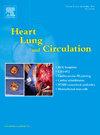社会经济地位对主要不良心血管、脑血管事件 (MACCE) 和全因死亡率的长期影响。
摘要
背景:社会经济地位(SES)通过上游、中游和下游因素的复杂相互作用对健康产生巨大影响。然而,人们对社会经济地位对长期主要不良心血管、脑血管事件和死亡率(MACCE)的预测作用知之甚少。次要终点是确定 SES 与全因死亡率之间的关系:方法:在吉隆骨质疏松症研究(Geelong Osteoporosis Study)这一澳大利亚大型地区性人口队列研究中,共对 3034 名参与者(1494 名女性和 1540 名男性)进行了基线评估。利用相对社会经济劣势指数(IRSD)对地区社会经济状况进行了评估,并将其分为五等分。主要终点 MACCE 被定义为心肌梗死、心力衰竭住院、恶性心律失常、中风和全因死亡率的综合。次要终点为全因死亡率。基线数据包括年龄、性别、吸烟和酗酒情况以及合并症,女性的基线数据收集时间为 1993-1997 年,男性的基线数据收集时间为 2001-2006 年,随访时间分别为 30 年和 22 年。利用逻辑回归评估了不同社会经济地位五分位数的MACCE和全因死亡率结果:结果:排除了失去随访或数据收集不完整的参与者,有2173名参与者符合分析条件。SES 与 MACCE 结果相关。与五分位数 I(最低 SES 层)相比,每个 IRSD 层的 MACCE 发生几率分别为五分位数 II 的几率比 (OR) 为 0.85(95% 置信区间 [CI]:0.65-1.13);五分位数 III 的几率比为 0.69(95% 置信区间 [CI]:0.51-0.91);五分位数 IV 的几率比为 0.66(95% 置信区间 [CI]:0.50-0.88);五分位数 V 的几率比为 0.55(95% 置信区间 [CI]:0.41-0.72)。在调整模型中,随着社会经济地位的提高,MACCE结果呈反向趋势:IRSD五分位数II,OR值为0.85(95% CI 0.62-1.17);五分位数III,OR值为0.70(95% CI 0.50-0.97);五分位数IV,OR值为0.73(95% CI 0.52-1.02);五分位数V,OR值为0.54(95% CI 0.39-0.74)。社会经济地位与全因死亡率成反比;IRSD 五分位数 II(OR 0.87,95% CI 0.66-1.16)未达到显著性,但与五分位数 I 相比,IRSD 五分位数 III(OR 0.65,95% CI 0.48-0.88)、五分位数 IV(OR 0.59,95% CI 0.44-0.80)和五分位数 V(OR 0.46,95% CI 0.34-0.62)的死亡风险较低。在调整模型中,SES 与全因死亡率之间呈反比趋势;与 IRSD 五分位数 I 相比,IRSD 五分位数 II(OR 0.82,95% CI 0.59-1.15)、IRSD 五分位数 III(OR 0.63,95% CI 0.49-0.95)、五分位数 IV(OR 0.59,95% CI 0.45-0.90)和五分位数 V(OR 0.44,95% CI 0.31-0.61)的死亡事件较少:我们的研究表明,社会经济地位越低,发生心脑血管负面事件的可能性就越大,同时总死亡率的风险也越高。社会经济地位是心血管疾病和中风长期预后的重要风险分层标志,值得进一步研究。Background
Socio-economic status (SES) has a large impact on health through a complex interplay of upstream, midstream and downstream factors. However, little is known about the predictive role of SES on long-term major adverse cardiovascular, cerebrovascular events, and mortality (MACCE).
Aim
To determine the long-term relationship between SES and MACCE for men and women. The secondary endpoint was to determine the relationship between SES and all-cause mortality.
Method
A total of 3,034 participants (1,494 women and 1,540 men) were assessed at baseline in the Geelong Osteoporosis Study, a large regional Australian population cohort study. Area-based SES was assessed, utilising the Index of Relative Socio-Economic Disadvantage (IRSD) and grouped into quintiles. The primary endpoint, MACCE, was defined as a composite of myocardial infarction, heart failure hospitalisation, malignant arrhythmias, stroke, and all-cause mortality. The secondary endpoint was all-cause mortality. Baseline data including age, sex, smoking status and alcohol use, and comorbidities were collected between 1993–1997 for women, and 2001–2006 for men, with follow-up over 30 and 22 years, respectively. Logistic regression was utilised to assess MACCE and all-cause mortality outcomes across the SES quintiles.
Results
Participants lost to follow-up or with incomplete data collection were excluded leaving 2,173 participants eligible for analysis. SES was associated with MACCE outcomes. Compared with Quintile I (lowest SES stratum), the odds of MACCE for each IRSD stratum were: Quintile II, odds ratio (OR) 0.85 (95% confidence interval [CI] 0.65–1.13); Quintile III, OR 0.69 (95% CI 0.51–0.91); Quintile IV, OR 0.66 (95% CI 0.50–0.88); and, Quintile V, OR 0.55 (95% CI 0.41–0.72). In the adjusted model, an inverse trend was noted, with reducing MACCE outcomes with an increasing SES status; IRSD Quintile II, OR 0.85 (95% CI 0.62–1.17); Quintile III, OR 0.70 (95% CI 0.50–0.97); Quintile IV, OR 0.73 (95% CI 0.52–1.02); and, Quintile V, OR 0.54 (95% CI 0.39–0.74). SES was inversely associated with all-cause mortality; IRSD Quintile II (OR 0.87, 95% CI 0.66–1.16) failed to achieve significance however IRSD Quintile III (OR 0.65, 95% CI 0.48–0.88), Quintile IV (OR 0.59, 95% CI 0.44–0.80) and Quintile V (OR 0.46, 95% CI 0.34–0.62) had a lower risk of mortality compared with Quintile I. In the adjusted model, an inversely proportional trend was noted between SES and all-cause mortality; IRSD Quintile II (OR 0.82, 95% CI 0.59–1.15), IRSD Quintile III (OR 0.63, 95% CI 0.49–0.95), Quintile IV (OR 0.59, 95% CI 0.45–0.90) and Quintile V (OR 0.44, 95% CI 0.31–0.61) had fewer mortality events compared with IRSD Quintile I.
Conclusions
Our research indicates that being part of a lower socio-economic stratum is linked to a higher likelihood of experiencing negative cardiovascular and cerebrovascular events, along with an increased risk of overall mortality. SES is an important risk stratification marker for long-term prognosis of cardiovascular diseases and stroke, and warrants further investigation.

 求助内容:
求助内容: 应助结果提醒方式:
应助结果提醒方式:


